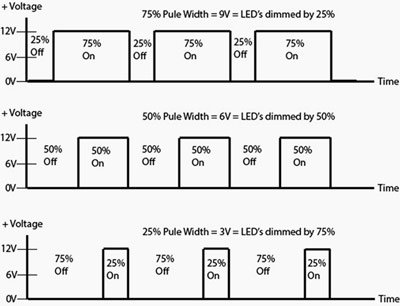Some standard dimming modern technologies consist of forwarding Phase, Reverse Phase (ELV), and 0-10V. Ahead Phase: Ahead phase-cut dimming (typically described as incandescent or Triac dimming) is one of the most usual dimming approaches. ELV dimmers are usually very suitable with LED tons, providing smoother lowering to reduced degrees.
Exactly how do I quit my dimmable LED lights from flickering?
How to quit LEDs flickering
Constantly drive LED items utilizing an LED power supply that’s designed for the task.
See to it all your LED items are compatible with the control circuits as well as the power supply you’re using.
Look for loosened circuitry and various other defective links.
Consider making use of a constant-current LED driver.

How to stop LEDs from flickering
1. Check your dimmer switch
A mismatched dimmer switch is one of the most common reasons for LED flickering. Most LED light bulbs are incompatible with traditional incandescent dimmers, using different techniques to produce light. The bulb will likely flicker if you’re using an LED bulb with an incandescent dimmer. To fix this problem, you’ll need to replace your incandescent dimmer with an LED-compatible dimmer.
2. Check for loose connections
Another common cause of flickering is loose electrical connections. If the connections between your light bulb and socket are loose, it can cause the bulb to flicker. To fix this problem, tighten the connections between the bulb and the socket.
3. Use the correct wattage bulb
If you’re using a higher-wattage bulb than what is recommended for your fixture, it can cause the bulb to flicker. This is because higher-wattage bulbs produce more heat than lower-wattage bulbs, and if the institution isn’t designed to dissipate that heat, it can cause the bulb to fail prematurely. To fix this problem, replace the high-wattage bulb with a lower LED bulb.
4. Reduce voltage fluctuations
Another common cause of flickering is voltage fluctuations in your home’s electrical system. These fluctuations can be caused by several factors, including faulty wiring or appliances that draw a lot of power. You can install a voltage stabilizer in your home’s electrical system to reduce voltage fluctuations.
5. Use a quality LED bulb
Not all LED bulbs are created equal, and some are more prone to flickering than others. If you’re using a cheap or inferior-quality LED bulb, the bulb will likely flicker at some point. To avoid this problem, purchase quality LED bulbs from a reputable manufacturer.
6. Check for other causes
If you’ve tried all of the above solutions and your LEDs are still flickering, another underlying issue may be causing the problem. Some other potential causes of flickering include bad capacitors in your fixtures or cases with your home’s electrical system.
How many LED lights can you put on a dimmer?
Varilight advises putting no more than 10 LED lights on one dimmer module. You can place numerous lamps on one plate, so if you have a 3-gang dimmer plate, you can put thirty LED lights on the scale overall (10 on each component).
Can I utilize a dimmer with low-voltage lighting?
Keep in mind: Line voltage incandescent and also low-voltage fixtures can be mixed on the same circuit, yet the proper low-voltage dimmer (for the provided low-voltage load) has to be used. Do not mix magnetic and also electronic transformers on the same dimming circuit. Note: Some low-voltage components can not be dimmed.
Exactly how do digital dimmers function?
Modern dimmers take electrical energy that moves via a light’s circuit and change it on and afterward off. When this takes place, it draws away power from the light bulb. The quantity of electric current streaming with the lightbulb is decreased.
What are the two sorts of stage cut lowering?
Phase-cut dimmers can operate on the waveform’s leading side (onward phase-cut) or routing side (reverse phase-cut).
What is the distinction between stage dimming and 0-10V?
The main difference between 0-10V and 1-10V is the instructions of the existing in-between dimmer and motorist. 0-10V is a present resource system, which means that the more indefinite supplies the power for the 0-10V signals– a mains link to the dimmer is required.
Can you use a 120V dimmer button for 12V?
If you wish to make use of a 120V magnetic reduced voltage dimmer switch with your new LED lights, our 12V Dimmable Chauffeurs are made especially for use with this type of button. … These motorists are wired between the switch and the LED fixture.
Can any kind of light be dimmable?
The majority of light fixtures will work with standard dimmer switches, consisting of those with halogen and incandescent lights. LED components, for example, may collaborate with typical dimmers, yet some might require a specialized dimmer. Likewise, not all portable fluorescent (CFL) lights can be dimmed.
Can 0-10V lower wires in the same channel?
Running 0-10V lowering cords in the same avenue as line voltage is not suggested. Running 0-10V reducing cables in the same avenue as line voltage will only be permitted if both the LED driver (or ballast) and the control module are ranked for Class 1 wiring, and also if the insulation requirements are also below satisfied.

